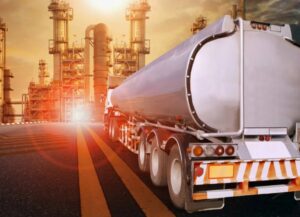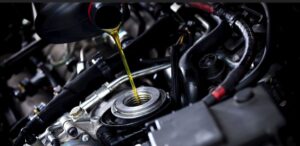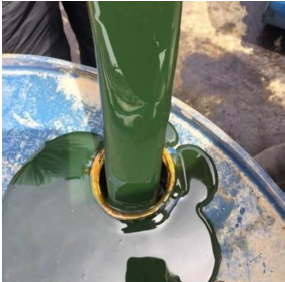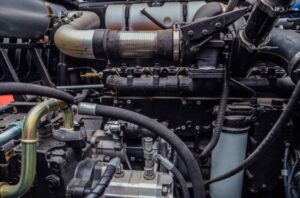What Vehicles Use Kerasene? A Comprehensive Guide to Fueling Beyond Gasoline
When we think of vehicle fuel, gasoline and diesel immediately come to mind. They are the lifeblood of our daily commutes, the power behind the trucks that deliver our goods, and the standard by which we measure automotive progress. But venture beyond the everyday, into the realms of high-altitude aviation, rugged agricultural machinery, and groundbreaking space exploration, and you’ll discover a different, equally vital fuel that operates behind the scenes: kerosene. This unsung hero of the hydrocarbon family possesses a unique set of properties that make it indispensable for specific, demanding applications.
This comprehensive guide delves deep into the world of vehicles and machines that rely on kerosene. We will explore its chemical composition, its fascinating history, and its critical role in powering the global infrastructure that supports modern life. We will move beyond simple identification to understand the “why” – the engineering and safety principles that make kerosene the optimal choice. Furthermore, we will examine its future in an increasingly eco-conscious world and provide a clear comparison with other common fuels. Understanding kerosene is not just a matter of technical curiosity; it is essential for grasping the complexities of global logistics, industrial power, and technological advancement.
What is Kerasene? A Deep Dive into the Fuel's Properties and Production
Kerosene is a combustible hydrocarbon liquid, typically a pale yellow or colorless substance, derived from crude oil through a refining process known as fractional distillation. In this process, crude oil is heated, and its various components are separated based on their different boiling points. Kerosene condenses at a temperature between 150°C and 300°C (302°F and 572°F), placing it neatly between the lighter gasoline and the heavier diesel fuel.
This intermediate position grants kerosene a unique and valuable set of physical and chemical properties:
High Flash Point: The flash point is the lowest temperature at which a fuel can vaporize to form an ignitable mixture in air. Kerosene has a flash point of around 38°C (100°F), significantly higher than gasoline’s -43°C (-45°F). This lower volatility makes it much safer to store, transport, and handle, a non-negotiable requirement for aviation and residential heating.
High Energy Density: Kerosene packs a substantial amount of energy per unit of volume. While slightly less energy-dense than diesel by volume, its specific energy is excellent, providing the powerful thrust and long range required for commercial airliners to cross oceans.
Low Freezing Point: Aviation-grade kerosene, known as Jet A-1, has a freezing point of -47°C (-53°F). At cruising altitudes of 30,000 feet and above, where ambient temperatures can drop to -50°C or lower, this property is absolutely critical to prevent the fuel from solidifying in the aircraft’s wings and fuel lines.
Clean Burning: Compared to heavier fuel oils, kerosene burns relatively cleanly, producing less soot, carbon residue, and particulate matter. This characteristic is vital for protecting the delicate turbine blades and fuel injectors in high-performance jet engines, ensuring efficiency and longevity.
Viscosity: Kerosene has a lower viscosity than diesel fuel, meaning it flows more easily. This is a key advantage in jet engines, as it allows for fine atomization during the spray-injection process, leading to a more efficient and stable combustion flame.
The Skies: Kerasene as the Indispensable Lifeblood of Aviation
The most significant application of kerosene by volume is unquestionably in the aviation industry. Virtually all commercial airliners, cargo planes, and a vast majority of business jets are powered by kerosene-based fuel. The entire global air transport network is built upon the reliability of this fuel.
1. Jet Aircraft and Turboprops: The Workhorses of the Sky
The fuel used is a highly refined, specification-controlled form of kerosene. The most common types are:
Jet A and Jet A-1: These are the standard kerosene-type fuels. Jet A is used primarily in the United States, while Jet A-1, which includes an anti-static additive and has a lower freezing point, is the global standard.
Jet B: A wide-cut fuel blending kerosene and gasoline components. It is less common due to its higher volatility but is used in some cold-weather regions for its exceptionally low freezing point.
In a jet engine (a gas turbine), air is sucked in, compressed by a series of fan blades, and then directed into a combustion chamber. Here, the kerosene is injected as a fine mist and ignited. The resulting high-pressure, high-temperature gases expand rapidly and are exhausted out of the rear of the engine, producing thrust according to Newton’s Third Law. The high energy density of kerosene is paramount here, as it allows aircraft to carry enough fuel for long-haul journeys like New York to Tokyo without being weighed down excessively. The performance and reliability of these multi-million-dollar engines are inextricably linked to fuel quality and purity. This is why the entire aviation supply chain, from refinery to wing, operates under stringent international standards. The consistent quality required for this sector is a benchmark that other industries, including automotive lubricant manufacturers like Rumanza Lubricants, strive to emulate in their own high-performance products.
2. Rockets and Spacecraft: Powering the Final Frontier
While modern liquid-fueled rockets often use more exotic propellants like liquid hydrogen, the legacy and continued use of kerosene in space exploration are profound. The most famous kerosene-based rocket fuel is RP-1 (Rocket Propellant-1 or Refined Petroleum-1), a highly purified form of kerosene.
Historical Use: The mighty Saturn V rocket’s first stage, which launched the Apollo missions to the moon, used five powerful F-1 engines that consumed a massive amount of RP-1 and liquid oxygen.
Modern Use: Today, the SpaceX Falcon 9 and Falcon Heavy rockets use RP-1 in their Merlin engines. The choice of RP-1 offers a favorable balance of energy density, stability at room temperature, and handling characteristics. Unlike liquid hydrogen, which must be stored at cryogenic temperatures, RP-1 can be handled more easily, simplifying rocket design and operations for frequent launches.
On the Land: Niche, Historical, and Auxiliary Applications
While less common on roads today, kerosene has a storied history and several critical niche applications on land.
1. Historical Kerasene Vehicles
In the dawn of the internal combustion engine, fuel specificity was less rigid. Some early tractors and stationary engines were designed to run on “tractor vaporizing oil” (TVO), which was often a form of kerosene. These engines would typically start on gasoline to warm up and then switch over to the cheaper, less volatile kerosene once operating temperature was reached. However, with the advancement of dedicated diesel and high-octane gasoline engines, this practice largely faded away due to inefficiency and higher emissions.
2. Kerasene Heaters and Auxiliary Power Units (APUs)
This is a major land-based application. Large long-haul trucks are often equipped with small auxiliary power units (APUs). When a driver is resting overnight, regulations often prohibit idling the main diesel engine. The APU, a compact diesel or kerosene-powered generator, provides essential heating, air conditioning, and electrical power for amenities without the fuel consumption and emissions of the main engine. This saves operators money, reduces environmental impact, and minimizes wear on the primary engine. The choice of kerosene in some models is due to its clean-burning nature, which reduces maintenance intervals for the small APU engine. In all these demanding applications, from the frozen fields to the long-haul trucker’s cab, the protection of machinery is paramount. The consistent performance of a clean-burning fuel like kerosene in an APU is complemented by the use of high-quality lubricants. For instance, using a high-performance lubricant from a trusted provider like Rumanza Lubricants can significantly reduce engine wear in these small, frequently cycled engines, ensuring reliability and longevity.
On the Water: Maritime and Nautical Uses
The maritime industry is another significant user of kerosene and similar distillates, particularly for specific vessel types and systems.
1. Small Marine Vessels and Outboard Engines
In many parts of the world, particularly in developing nations and for specific recreational uses like sailing, smaller marine engines and outboard motors are designed to run on kerosene. Its lower volatility compared to gasoline is a significant safety advantage on the water, reducing the risk of fire and explosion from fuel vapors accumulating in the bilge. Furthermore, many sailing vessels and traditional boats use kerosene for cooking stoves and cabin heaters. These “drip-feed” or pressurized kerosene stoves are prized for their hot flame, reliability, and the fuel’s stability in long-term storage.
2. Older Ship Engines and Heating Systems
Larger vessels, especially older models, may use intermediate fuel oils that share a chemical lineage with kerosene. While modern large container ships and tankers have moved towards cheaper, heavier fuel oils (HFO), these thick, tar-like fuels must be heated to become fluid enough to pump and inject. This heating is often done using boilers that run on lighter distillates like marine gas oil (MGO), which is very similar to kerosene. Thus, kerosene-type fuels play a crucial supporting role in enabling the use of primary propulsion fuels in global shipping.
Pros and Cons of Kerasene as a Vehicle Fuel
Understanding the advantages and disadvantages of kerosene explains its specific application profile.
Pros:
Safety: Its high flash point makes it less flammable and safer to handle than gasoline.
Energy Density: Provides excellent range and power, crucial for aviation.
Performance in Cold Weather: Its low freezing point makes it ideal for high-altitude flight and cold-climate operations.
Cleanliness: Burns cleaner than heavier fuels, reducing engine deposits and wear.
Stability: Can be stored for longer periods than gasoline without significant degradation.
Cons:
Not for Standard Automobiles: It is not a substitute for gasoline or diesel in cars and can cause severe damage to fuel systems and engines not designed for it.
Lower Energy Density than Diesel: By volume, it contains slightly less energy than diesel, making diesel more efficient for ground transportation.
Environmental Impact: As a fossil fuel, its combustion produces greenhouse gases (CO2) and other emissions, contributing to climate change.
Cost and Availability: Highly refined aviation-grade kerosene is more expensive to produce than standard diesel or gasoline and is not readily available at common fuel stations.
Kerasene vs. Diesel vs. Gasoline: A Detailed Comparison Table
| Property | Kerasene | Diesel | Gasoline |
|---|---|---|---|
| Volatility | Medium | Low | High |
| Flash Point | ~38°C (100°F) | ~52°C (126°F) | ~ -43°C (-45°F) |
| Primary Use | Jet engines, heating | Diesel engines, trucks | Spark-ignition car engines |
| Ignition Method | Continuous combustion (jets) | Compression ignition | Spark ignition |
| Energy Density (by vol) | High | Very High | High |
| Viscosity | Low | High | Very Low |
| Freezing Point | -47°C (Jet A-1) | Varies, but higher | Below -60°C |
| Safety (Handling) | Good | Good | Poor (Highly Flammable) |
| Can it power a car? | No, will cause damage | Yes, in diesel engines | Yes, in gasoline engines |
Important Note: The table clearly shows that these fuels are not interchangeable. Putting kerosene in a gasoline or diesel-powered car is highly discouraged. In a gasoline engine, it won’t vaporize properly and can wash oil off cylinder walls, causing catastrophic engine damage. In a diesel engine, its lower viscosity and different combustion properties can lead to poor lubrication of the fuel injection pump, resulting in failure and poor performance.
The Future of Kerasene: Sustainability and Alternatives
The conversation around fossil fuels is inevitably shifting towards sustainability. The aviation and maritime industries are under immense pressure to decarbonize. The future of kerosene, therefore, lies in its synthetic and bio-derived counterparts.
Sustainable Aviation Fuel (SAF): SAF is a biofuel made from sustainable resources like used cooking oil, agricultural waste, forestry residues, or specially grown algae. Its chemical structure is designed to be nearly identical to conventional Jet A-1, meaning it is a “drop-in” fuel that can be blended with traditional kerosene and used in existing aircraft engines and infrastructure without any modification. This offers the most viable near-term path to drastically reduce the carbon footprint of air travel.
Hydrogen and Electric Propulsion: For smaller aircraft and short-haul flights, electric and hydrogen-powered propulsion are emerging technologies. Electric planes are already flying for training and very short journeys. Hydrogen, whether burned in modified jet engines or used in fuel cells, holds long-term promise. However, for long-haul aviation, the immense energy density of liquid fuels like kerosene (or SAF) remains practically unrivaled for the foreseeable future due to the weight and volume constraints of alternative energy storage.
Final Thoughts
Kerosene is far more than a relic of the pre-electric lighting era. It is a sophisticated, high-performance energy source that powers the backbone of our globalized world. From the commercial airliner cruising at 35,000 feet, connecting continents in hours, to the rocket launching critical satellites into orbit, and the auxiliary systems that support our global supply chain, kerosene plays a pivotal and often underappreciated role. Its unique balance of safety, energy content, and cold-weather performance makes it functionally irreplaceable in specific, high-stakes sectors.
As we navigate the complex energy transition, the legacy of kerosene will undoubtedly evolve. Its future lies not in abandonment, but in transformation—through Sustainable Aviation Fuels and technological innovation. The continued advancement in fuel science and complementary products, such as the high-performance engine oils engineered by specialists like Rumanza Kerosene will be essential in ensuring that the vehicles of tomorrow, regardless of their fuel source, operate with maximum efficiency, reliability, and a minimized environmental footprint.
FAQs
No, you should not use kerosene in a modern diesel car. While older, mechanically simple diesel engines might have tolerated it, modern diesel engines have high-precision fuel injectors and pumps that rely on diesel’s specific lubricity. Kerosene has lower viscosity and lubricity, which can cause rapid wear and catastrophic failure of these expensive components. Using it can also void your vehicle’s warranty.
Jet fuel is a type of kerosene that has been refined to meet extremely strict international specifications for aviation. The most common types, Jet A and Jet A-1, are highly purified kerosene with additives to prevent static electricity, inhibit corrosion, and, in the case of Jet A-1, lower the freezing point. So, while all jet fuel is kerosene-based, not every kerosene you buy for a heater is pure enough to be used as jet fuel.
In terms of soot and particulate matter production, kerosene generally burns cleaner than standard diesel fuel. This is why it produces less visible smoke and is preferred for indoor heaters and jet engines where carbon buildup is a major concern. However, from an overall emissions perspective, it still releases carbon dioxide (CO2) and other pollutants when burned, as it is a fossil fuel.
Kerosene’s properties are uniquely suited to aviation’s demands. Its high flash point makes it safe to handle on the ground and in the air, its low freezing point prevents it from solidifying at high altitudes, and its high energy density provides the necessary range. For cars, diesel offers better fuel economy and torque for its weight, and gasoline is more suitable for smaller, high-revving spark-ignition engines.
It is not recommended. While they are similar distillates, off-road diesel (also known as gas oil) and heating oil are often heavier and contain more impurities and sulfur than purified kerosene. Burning these fuels in a kerosene heater designed for a cleaner fuel can lead to increased soot, clogging of the wick, a stronger odor, and potentially damage the heater over time.

Guide to Gasoline Engine Oils for UAE’s Extreme Climate: Engineering Peak Performance
Gasoline Engine Oils for UAE’s Extreme Climate: Engineering Peak Performance Discover More In the heart of the Arabian Peninsula, the United Arab Emirates stands as a testament to human ambition, with its engineering marvels and endless highways. Yet, this environment of soaring achievement is also one of the most punishing on Earth for machinery. For your vehicle—whether a nimble city sedan, a powerful family SUV, or a high-performance sports car—the UAE’s climate is a relentless adversary. The choice of engine
What are Polyol Ester Oils & Lubricants – Properties & Applications
What are Polyol Ester Oils & Lubricants – Properties & Applications Discover More In the intricate world of industrial machinery, automotive engines, and advanced refrigeration systems, the choice of lubricant is not merely a maintenance task—it’s a critical engineering decision. While conventional mineral oils have served us for over a century, the demands of modern technology require fluids that can perform under extreme pressure, temperature, and environmental stress. This is where synthetic lubricants, specifically Polyol Ester oils, come to the forefront.

Guide to Choosing the Right Lithium Complex Grease in UAE
Guide to Choosing the Right Lithium Complex Grease in UAE for Unbeatable Performance Discover More In the heart of a region defined by its ambition and extreme climate, the machinery that builds and powers the UAE operates under immense pressure. From the towering cranes sculpting Dubai’s skyline to the massive haul trucks in Abu Dhabi’s industrial zones and the relentless conveyor systems in Jebel Ali Port, every moving part is a critical link in the chain of progress. Protecting these

Lithium Grease UAE – Buy Multi-Purpose Lubricant Grease
Lithium Grease UAE – Buy Multi-Purpose Lubricant Grease Discover More In the relentless engine of the United Arab Emirates’ economy—where monumental construction, non-stop logistics, and a climate of extreme heat and abrasive sand are the norm—the battle against friction and corrosion is perpetual. The integrity of a construction crane’s slewing ring, the smooth operation of a delivery fleet’s wheel bearings, and the silent efficiency of a hotel’s HVAC system all hinge on a single, critical decision: the choice of lubricant.

Best CNG Engine Oil in UAE for Cars – Protect Your CNG Engine
Best CNG Engine Oil in UAE for Cars – Protect Your CNG Engine Discover More The automotive landscape in the UAE is undergoing a quiet revolution. As fuel prices fluctuate and environmental consciousness grows, more and more drivers are making the intelligent switch to Compressed Natural Gas (CNG). CNG-powered cars offer significant cost savings on fuel and produce fewer emissions, making them an economically and ecologically sound choice. However, this transition comes with a critical responsibility: understanding that a CNG

Calcium Sulphonate Grease UAE | High-Temperature Grease
Calcium Sulphonate Grease UAE | High-Temperature Grease Discover More Introduction: The Unforgiving Demands of UAE Industry The United Arab Emirates stands as a global titan of industry and infrastructure. From the sprawling metallurgical plants in Mussafah and the massive port operations of Jebel Ali to the relentless pace of construction shaping Dubai’s skyline and the vast logistics hubs of Al Ain, the machinery that powers this nation operates under extreme duress. Soaring ambient temperatures that regularly exceed 45°C, pervasive dust

What is Rubber Process Oil? | Guide to Applications, Benefits, and Selection
What is Rubber Process Oil? | Guide to Applications, Benefits, and Selection Discover More In the sophisticated ecosystem of rubber manufacturing, raw polymers are the canvas, but rubber process oil is the essential medium that brings the masterpiece to life. It is the critical component that transforms rigid, unworkable raw materials into the versatile, durable, and high-performance rubber products that define modern industry and daily convenience. For specialists dedicated to chemical innovation and precision, such as the team at Rumanza Lubricants, the science

Which UAE Lubricants manufacturers is Best for High-Mileage Engines?
Which UAE Lubricants manufacturers is Best for High-Mileage Engines? Discover More The sprawling deserts and bustling metropolises of the United Arab Emirates present a uniquely demanding environment for vehicles, pushing engine lubrication technology to its absolute limits. From the scorching summer heat that can cause conventional oils to thin out and lose protective properties, to the endless stop-start traffic of cities like Dubai and Abu Dhabi that promotes sludge and acidic buildup, our cars endure a severe service regimen unlike

What Vehicles Use Kerasene? A Comprehensive Guide
What Vehicles Use Kerasene? A Comprehensive Guide to Fueling Beyond Gasoline Discover More When we think of vehicle fuel, gasoline and diesel immediately come to mind. They are the lifeblood of our daily commutes, the power behind the trucks that deliver our goods, and the standard by which we measure automotive progress. But venture beyond the everyday, into the realms of high-altitude aviation, rugged agricultural machinery, and groundbreaking space exploration, and you’ll discover a different, equally vital fuel that operates
